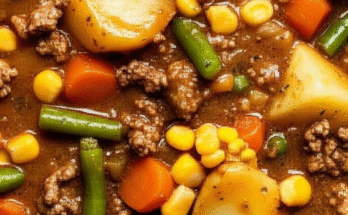
Beans are more than just a hearty addition to your meals—they play a powerful role in managing blood sugar levels. Thanks to their unique nutritional profile and the way your body processes them, beans can help prevent spikes and promote steady glucose levels.
Why Beans Are Great for Blood Sugar Control
1. Packed with Soluble Fiber
Beans are high in soluble fiber, which slows digestion and reduces the rate at which sugar enters the bloodstream. This helps prevent post-meal blood sugar spikes and supports long-term glucose control.
2. Low Glycemic Index (GI)
Beans have a naturally low GI, meaning they raise blood sugar gradually instead of causing sudden spikes. Low-GI foods are especially beneficial for people with type 2 diabetes or insulin resistance.
3. Rich in Plant-Based Protein
Protein slows digestion and keeps you feeling full longer—both important for blood sugar stability. Unlike animal proteins, beans are free from saturated fat, making them a heart-healthy choice too.
4. Contain Resistant Starch
Some of the starch in beans is “resistant,” meaning it bypasses digestion in the small intestine. This leads to less glucose being absorbed into the bloodstream and also helps support gut health, which can improve insulin sensitivity over time.
5. Aid in Weight Management
Beans are filling due to their fiber-and-protein combo, helping you avoid overeating or reaching for sugary snacks. Maintaining a healthy weight is key to keeping blood sugar levels in check.
Other Vegetables That Help Manage Blood Sugar
While bitter melon often gets the spotlight, several other vegetables are also excellent for blood sugar control:
1. Broccoli
- High in fiber and low in carbs
- Rich in chromium, a mineral that supports insulin function
2. Spinach
- Loaded with magnesium, which helps regulate blood sugar and insulin activity
- Low in calories and carbs, making it ideal for any meal
3. Cauliflower
- A great low-carb substitute for rice or grains
- Contains sulforaphane, a compound that may enhance blood sugar control
4. Carrots
- Despite their natural sweetness, they have a low glycemic index
- High in fiber and beta-carotene, a powerful antioxidant
5. Zucchini
- Very low in calories and carbohydrates
- High in water and fiber—great for volume eating without blood sugar spikes
6. Green Beans
- Provide fiber and beneficial plant compounds, including lectins, which may help regulate blood sugar
- Also rich in essential vitamins and minerals
7. Kale
- Packed with antioxidants and vitamin C, which may support better blood sugar control
- Versatile in the kitchen—great raw or cooked
Final Thoughts
Incorporating beans and a variety of non-starchy vegetables into your diet can significantly improve blood sugar regulation. These foods not only support better glucose control but also contribute to overall wellness—from heart health to weight management.


